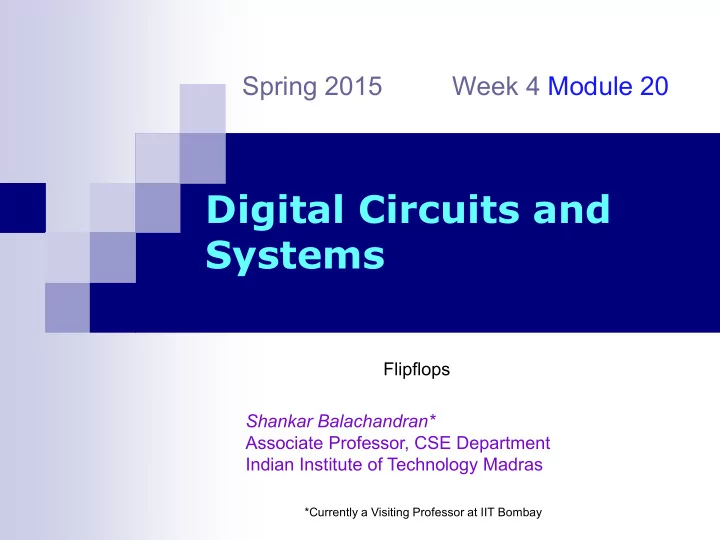

Spring 2015 Week 4 Module 20 Digital Circuits and Systems Flipflops Shankar Balachandran* Associate Professor, CSE Department Indian Institute of Technology Madras *Currently a Visiting Professor at IIT Bombay
D Flip-flop The D latch has a shortcoming – the inputs should not change while the gate signal is asserted (otherwise there are multiple asynchronous state changes which can lead to problems in a circuit). One solution is to design the circuit so that state changes occur during clock edges rather than during clock levels – this type of device is called edge-triggered (i.e., flip-flop). Flipflops 2
Edge-Triggering: Master-Slave D FF Flipflops 3
Master-Slave Timing Diagram Example : When CLK is high, output of master is allowed to change with D; when CLK is low (falling edge), the output of the master is fixed and propagated through to the output of the slave this flip- flop triggers on falling or negative edge . CLK D Q* Q* 0 0 1 1 1 0 Characteristic Table Flipflops 4
Summary: Level vs Edge Triggering Q B Q A Q C Q D D Q D Q Q Q Q CLK Λ Λ CLK A: Latch D B: +ve Edge trigerred DFF C: -ve Edge trigerred DFF CLK D Q A Q B Q C Flipflops 5
Flip Flop with Preset and Clear PRESET_n PRESET_n CLEAR_n CLEAR_n Flipflops 6
D-Flip Flop With Synchronous Clear Flipflops 7
T-Flip Flop A T flip-flop changes state on every clock if it is enabled (T=“1”). It can be implemented by connecting together the J and K inputs of a JK flip-flop. Flipflops 8
End of Week 4: Module 20 Thank You Flipflops 9
Recommend
More recommend